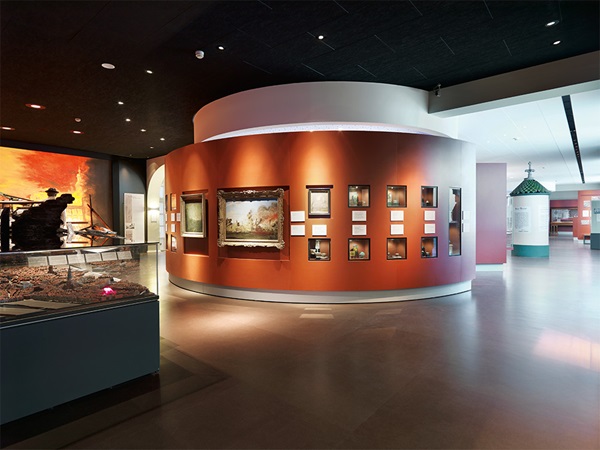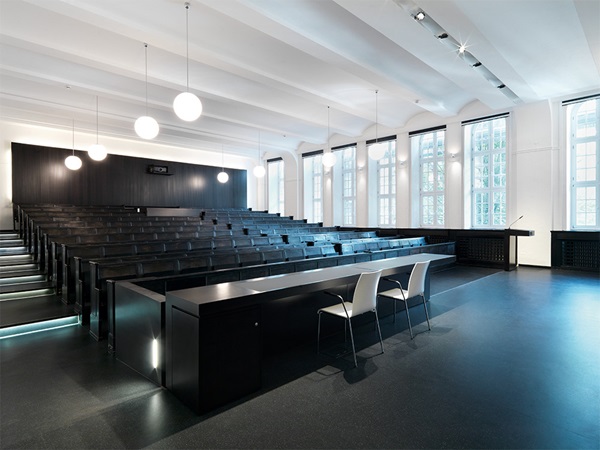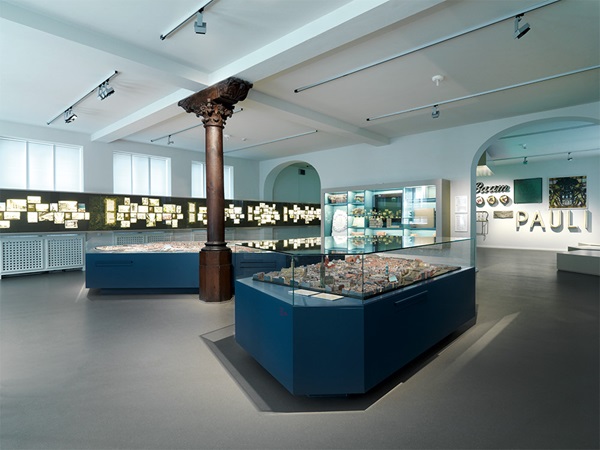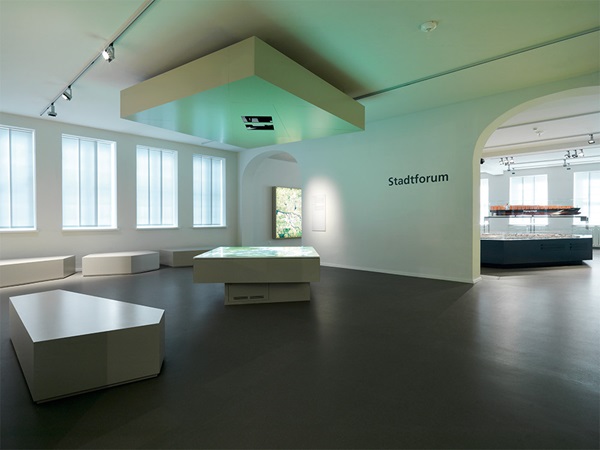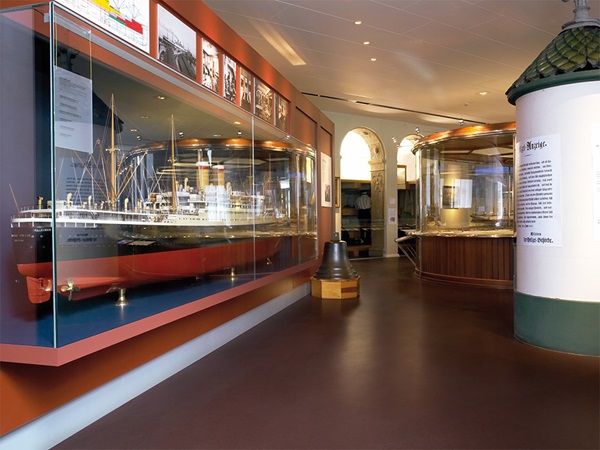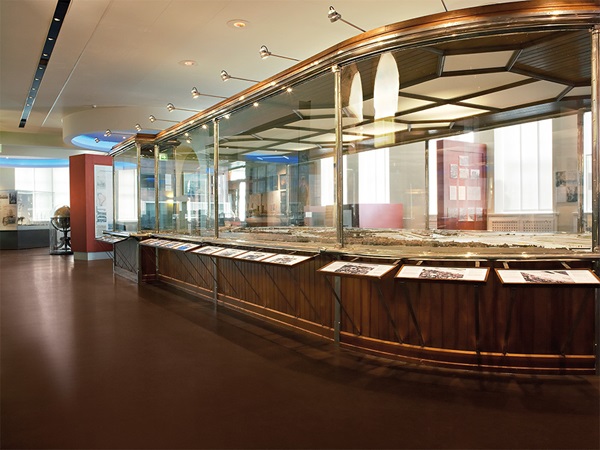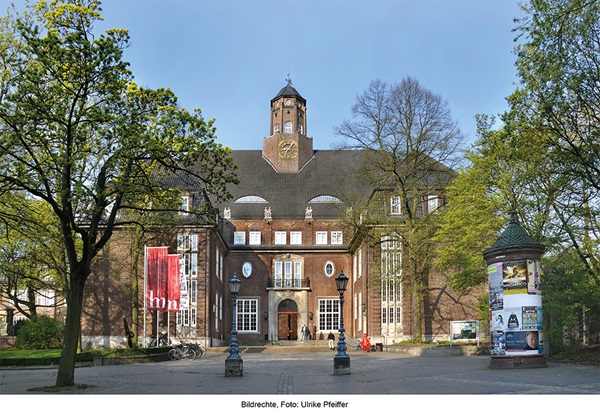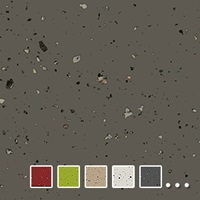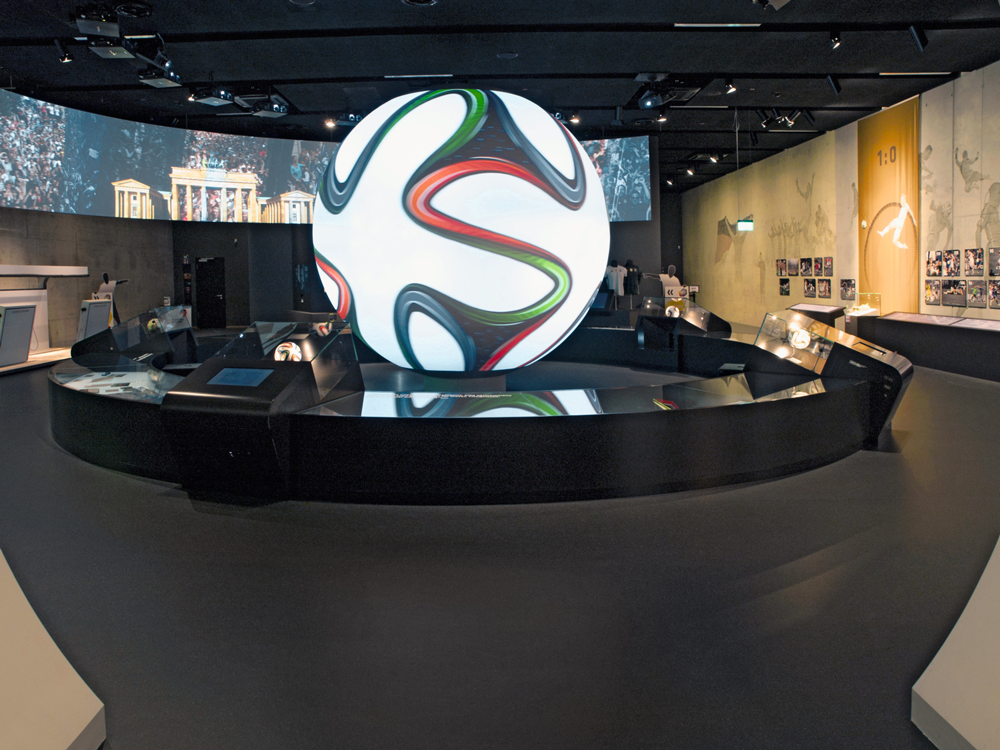Influential branch of industry
The “Port as pacesetter” exhibition illustrates the rapid and far-reaching changes experienced by Hamburg from the 20th century up to the present with a display of pictures, artefacts and models in four newly designed rooms. It clearly shows to what extent the port is permanently shaping Hamburg and how it influences the city’s development like no other branch of industry.
Walking around the museum, visitors will find a wealth of information about the course of the Elbe river and shipping traffic in the port and see how the urban landscape and architecture have changed over the years. Interactive displays are also on offer. In the socalled City Forum, visitors to the museum can navigate through 1,200 years of the city’s history with a time wheel on a media table and vividly experience how the city has developed.
Prize-winning rubber floor covering
The new permanent exhibition was conceived by the Swiss architect’s agency arge gillmannschnegg in close collaboration with the museum’s scientific staff. “We wanted the rooms to be designed so that they harmoniously fit in with the existing round tour,” explains the curator, Dr Ralf Wiechmann.
While the walls become brighter from room to room, thenoraplan unita dark grey rubber floor covering from nora systems creates a calming and yet stylish atmosphere due to its reflecting embedded granite chips. noraplan unita has already won the 2012 red dot design award for this unusual combination of materials.
Important factors for the museum’s directors, alongside the visual benefits of the floor covering, were extreme durability and minimum maintenance requirements. “We had norament 926 strada installed in 2007 for the ‘Emigration via Hamburg’ permanent exhibition and were exceedingly satisfied with it. That’s why we wanted a nora floor covering for the new rooms as well,” explains Wiechmann.
Durable and easy to clean
The rubber floor coverings from nora systems offer numerous advantages. On account of their dense closed surface they can be easily cleaned and, in contrast to other resilient floor coverings, they do not require a coating. This obviates the need for timeconsuming and costly new coatings, a great economic benefit for the museum.
The rubber floorings can also withstand extreme strain. “This is crucial because not only do we have a lot of public traffic, but the exhibits, some of which are very heavy, have to be moved into place using a pallet truck,” says the curator.
Like all other products from nora systems, the new noraplan unita floor covering is also permanently resilient and slip-resistant, combining a high degree of walking comfort with good footfall noise insulation, a welcome relief for staff and museum visitors who spend a long time on their feet.
Guarantee for healthy indoor air
“Last but not least, environmental and sustainability aspects, as well as conservation reasons, also played a role in our deliberations,” continues Wiechmann. All floor coverings from nora systems are free of PVC. The products from the Weinheim-based rubber specialist contribute to a healthy indoor air, for which they were the first resilient floor coverings to be awarded the "Blue Angel … for low emissions" eco label as long ago as 2006.
Once noraplan unita had been installed in the new exhibition rooms, the museum quickly decided to use the rubber floor covering for the forthcoming renovation of the listed auditorium. The Office for the Preservation of Historical Monuments gave its approval, and so the elegant-looking black noraplan unita flooring is now an attractive eye-catcher in the richly traditional auditorium at the hamburgmuseum.

 Poland | English
Poland | English
